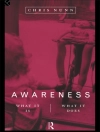`Clearly written and readily understandable.’
– Journal of Canadian Academy of Child and Adolescent Psychiatry
`The book is full of useful advice, much of which is not to be found in any of the other books in this market. For those patients who are likely to benefit from a cognitive behavioural approach to their bulimic problem, I think that the model and techniques are excellent. The links between cognition, behaviour and affect are clearly made, and go beyond simple matters of food, weight and shape…this book is a valuable addition to the literature. Its blend of theory, empirical evidence, clinical sense and a wide range of cognitive domains means that I will certainly be recommending this to a number of my patients.’
-British Journal of Clinical Psychology
`Bulimia nervosa is a very distressing and common disorder for which effective treatment is quite limited. Fortunately, this new volume by clinical experts at the cutting-edge of the new treatment for this disorder provides a solution. This volume presents a detailed program by which individuals with bulimia nervosa can help themselves. It is highly readable and enriched with a number of relevant clinical examples. I highly recommend this volume.’
– Aaron T Beck, M.D. University Professor of Psychiatry, University of Pennsylvania
Written for those who either suffer from or come into contact with bulimia nervosa, this manual will be an invaluable source of support for all those who wish to understand and to change their behaviour. Written in a clear and accessible style, it provides a framework for understanding what maintains the disorder and why it has developed. It is a detailed, step-by-step programme to aid recovery.
The authors draw on recent developments in cognitive theory and on innovative and up-to-date cognitive therapy treatment strategies. They focus on the link between thinking and behaviour, and give guidance on learning how to identify and change negative thoughts, underlying assumptions and core beliefs. Factual information is presented alongside a complete programme of work sheets, self-assessment questionnaires and case examples from the authors’ extensive professional experience.
Cuprins
Preface. Acknowledgements. PART I: The Facts. 1. Background and Basics 2. Introduction to Bulimia Nervosa. 3. Do I Have Bulimia Nervosa? 4. Theories of Bulimia Nervosa PART II: The Programme. 5. Encouraging Change. 6. Why Change? 7. The Cognitive Model. 8. The Myth of Control. 9. Confirming Control. 10. Identifying Permissive Thoughts. 11. Challenging Permissive Thoughts. 12. Identifying Positive Beliefs About Eating. 13. Challenging Positive Beliefs About Eating. 14. Changing Behaviours. 15. Identifying Underlying Assumptions. 16. Challenging Underlying Assumptions. 17. Identifying Core Beliefs. 18. Challenging Core Beliefs. 19. Preventing Relapse. Appendices: 1. Working Out Your BMI. 2. Blank Copies of Worksheets. 3. Distinguishing Between Thoughts and Feelings. 4. Additional Reading. References. Index.
Despre autor
Myra Cooper is research tutor at the Oxford Doctoral Course in Clinical Psychology at the Warneford Hospital and principal clinical psychologist at Oxfordshire Mental Healthcare NHS Trust.












